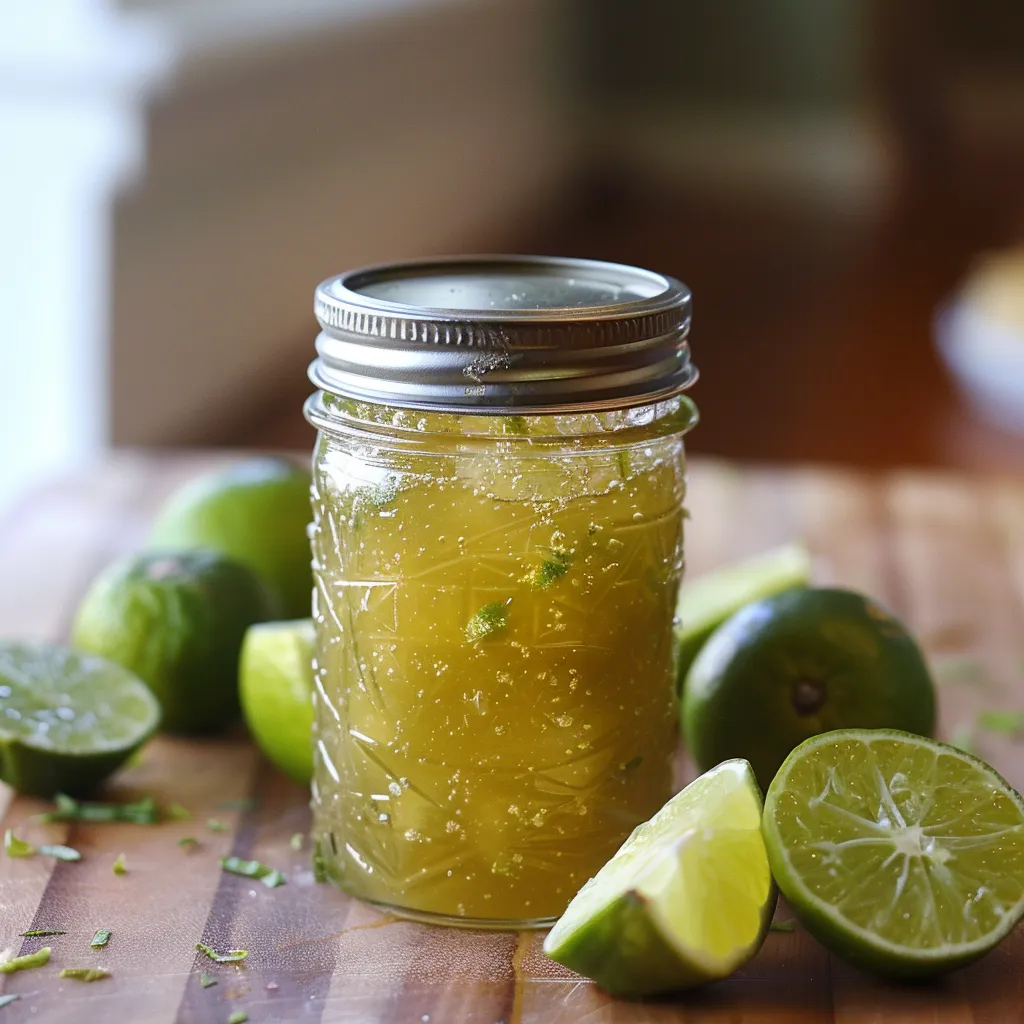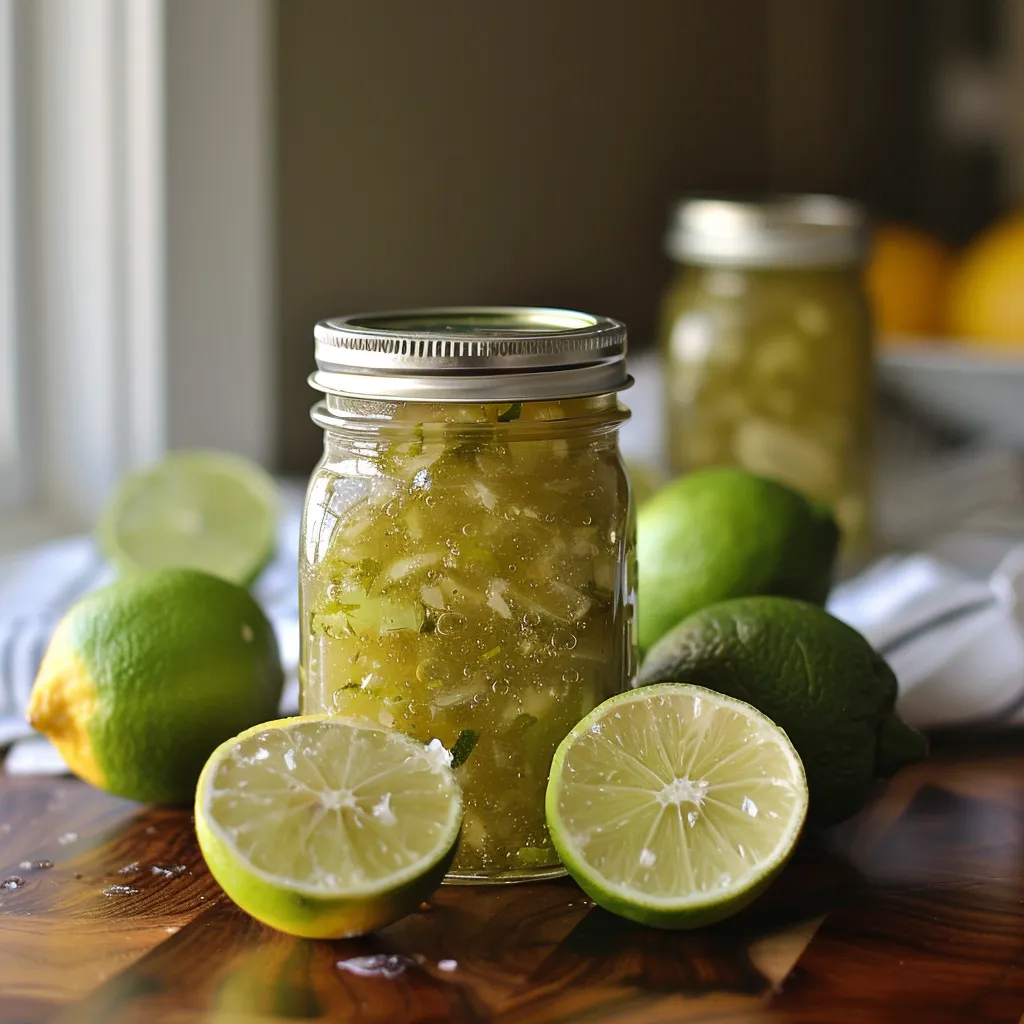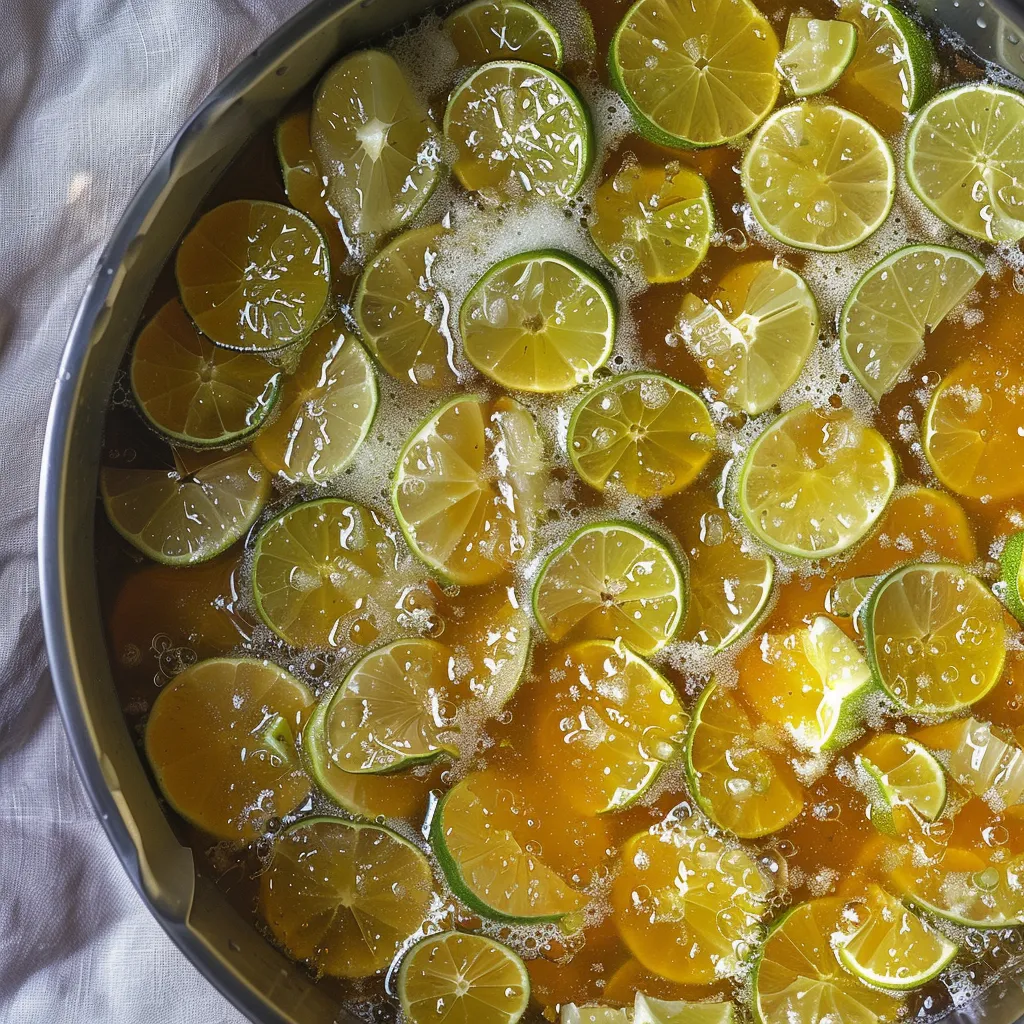 Pin it
Pin it
This vibrant lime marmalade brings a zesty punch to morning toast and afternoon tea with its intense citrus flavor and gorgeous jewel-like appearance. Made the traditional way without commercial pectin, it allows the natural pectins in the lime to create that perfect jammy consistency.
I first made this marmalade after a neighbor gifted me a bag of fresh limes from their Florida vacation. The kitchen filled with such an incredible aroma that I've made it religiously every winter since.
Ingredients
- About 12 to 14 medium limes: Select firm fruits with glossy green skin for the brightest flavor and highest pectin content.
- Water: The overnight soak creates the perfect gel texture without commercial additives.
- Granulated sugar: Preserves the marmalade while balancing the tartness of the limes.
- Fresh lemon juice: Adds brightness and helps achieve the perfect set.
- Optional green food coloring: Enhances the visual appeal if your limes produce a more yellow marmalade.
 Pin it
Pin it
Step-by-Step Instructions
- Preparation:
- Thoroughly wash limes under cool running water to remove any wax or residue. This step ensures your marmalade has a clean citrus flavor without any bitter commercial coatings.
- Trim and Slice:
- Cut off the blossom and stem ends of each lime. Use a sharp knife or mandoline to create paper thin slices. The thinner your slices, the more elegant your final marmalade will be. Quarter each slice for perfectly sized pieces in the finished product.
- First Soak:
- Combine your sliced limes with eight cups of water in a large nonreactive bowl. Cover and allow to sit overnight at room temperature. This crucial resting period begins breaking down the pectin in the rinds and mellows any bitterness.
- Initial Cooking:
- Bring the soaked lime mixture to a rolling boil in a large heavy bottomed pot. Continue boiling uncovered for a full 40 minutes, stirring occasionally to prevent sticking. The peels should become translucent and tender when properly cooked.
- Add Sweetness:
- Gradually incorporate six cups of sugar while maintaining the boil. Stir constantly to ensure complete dissolution and prevent crystallization. Taste and add up to one additional cup of sugar if desired for a sweeter result.
- Second Rest:
- Remove from heat, cover, and allow the mixture to rest for at least six hours or overnight. This resting period allows the flavors to meld beautifully and helps the natural pectin develop its setting properties.
- Final Cooking:
- Return the mixture to high heat and bring to a vigorous boil. Stir continuously to prevent scorching. Cook until the marmalade passes the cold plate test or reaches 216 to 218 degrees Fahrenheit on a candy thermometer.
- Flavor Adjustments:
- Add fresh lemon juice to taste for brightness and a drop or two of green food coloring if desired. These final touches allow you to customize the marmalade to your exact preferences.
- Jarring:
- Let the finished marmalade sit for 10 minutes off heat before stirring thoroughly and transferring to prepared jars. Process in a water bath canner for proper preservation or store in the refrigerator.
The transformation of these humble limes into something so vibrant always reminds me of my grandmother. She would make citrus preserves every winter, and the kitchen would fill with that unmistakable zesty aroma. She taught me that patience makes perfect marmalade.
Storing Your Marmalade
Properly processed and sealed jars of lime marmalade will maintain peak quality for about 18 months when stored in a cool, dark pantry. Once opened, always refrigerate your marmalade and use within three months for the best flavor experience. The natural acid content helps preserve it beautifully, but refrigeration ensures maximum freshness after opening.
Creative Uses Beyond Toast
While delicious on morning toast, this versatile lime marmalade shines in many culinary applications. Spoon it over vanilla ice cream for a refreshing dessert, use as a glaze for roasted chicken or pork, mix into yogurt, or add a spoonful to hot tea for an instant lime infusion. My family particularly loves it dolloped over cream cheese with crackers as an easy appetizer.
Troubleshooting Tips
If your marmalade seems too thin after processing, remember that it will continue to set as it cools completely. For a thicker consistency in future batches, cook slightly longer during the final boiling stage. If too thick, a shorter cooking time or additional tablespoon of water during the final cooking can help. The cold plate test remains the most reliable way to check for proper setting.
 Pin it
Pin it
Frequently Asked Questions
- → Do I need pectin for this recipe?
- No, this old-fashioned marmalade thickens naturally from the citrus peels.
- → Can I use bottled lemon juice?
- Fresh lemon juice is preferred, but bottled can be used in a pinch.
- → How long will it last once canned?
- Properly sealed jars last up to 18 months in the pantry.
- → Can I freeze this marmalade instead of canning?
- Yes, just leave space in freezer-safe jars and store in the freezer.
- → Is the green food coloring necessary?
- Not at all. It's optional for appearance and doesn’t affect the flavor.
